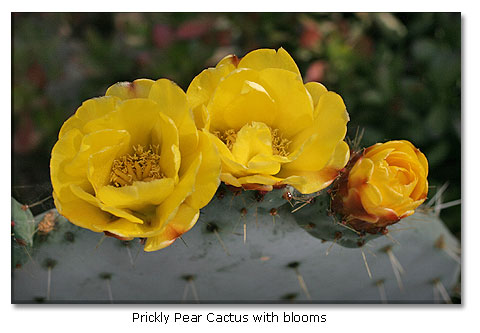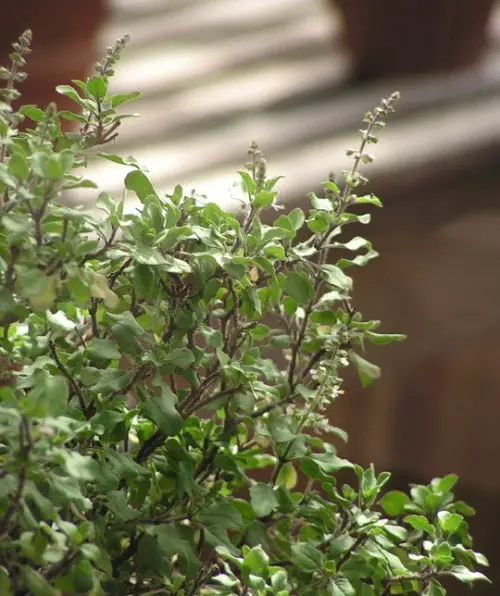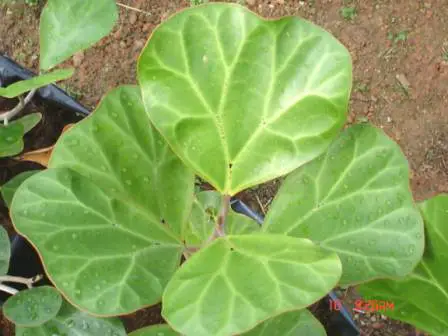Prickly Pear Cactus
The prickly pear cactus are actually members of the Opuntia genus and grow in the deserts of North America and can be found in South America deserts as far south as the southern part of Argentina. The size ranges from a few inches to over one hundred feet in height. Like most of the cacti family, they have large leathery pads that store water, extravagant colorful blooms and many, many sharp spines! The pollinating of cacti plants are done by certain species of bees that feed the nectar to their developing larvae.

The prickly pear cactus is not only edible but is considered a delicacy
Some of the spines detach very easily to anything they come in contact with and thus spread themselves. One species, the cholla, has flattened joints that serve the same purpose as pad does for the prickly pear cactus. The glochids which appear above the regular spines are very easy to detach but harder and more painful to remove from skin.
The packrat uses the prickly pear cacti as home and food, building the nests from the cholla branches, which provide protection from coyotes. The packrat nests are then used by rattlesnakes which had the packrats for dinner, so be careful if you see a nest in cholla cacti, it might have more then just packrats inside. Jackrabbits and javelina eat the ripe fruit and fleshy pads, thriving on the cactus.
There are also several insects which depend on the prickly pear as their food source, such as the giant cactus beetle and cactus weevil. Species of birds like the cactus wren, curved billed thrashers and roadrunners use the cacti for homes and roosting sites.
Both the fruits and pads are edible, and the most common culinary prickly pear cacti are the Indian Fig cacti. They are rich in fibers that are helpful in keeping blood sugar down because they take longer to be digested. A good website for prickly pear descriptions is the following one: http://www.desertusa.com/magoct97/oct_pa/du_prkpear.html and it also has information for candy, syrup and juice made from the cactus. Native Americans have used the prickly pear for thousands of years as a welcome addition to their diet.
Perhaps the most important reason the prickly pear was so important to the conquistadores of Spain was the tiny cochineal that feeds on the cacti. From it, a brilliant dye could be made in colors of red or purple, colors that only royalty could afford. Such rich colors and the secret of their making were kept secret for many years, perhaps more important then the galleons of Peruvian silver and gold to those who ruled across the seas.



The Prickly Pear Cactus is a bright yallowish color that obtains happyness to viewers .
can prickly pear cactus be in side by sunny window
These are wonderful flowers the yellow is so vibrant and full of color.
http://www.forestwander.com